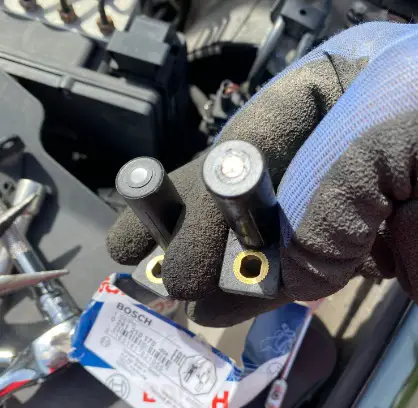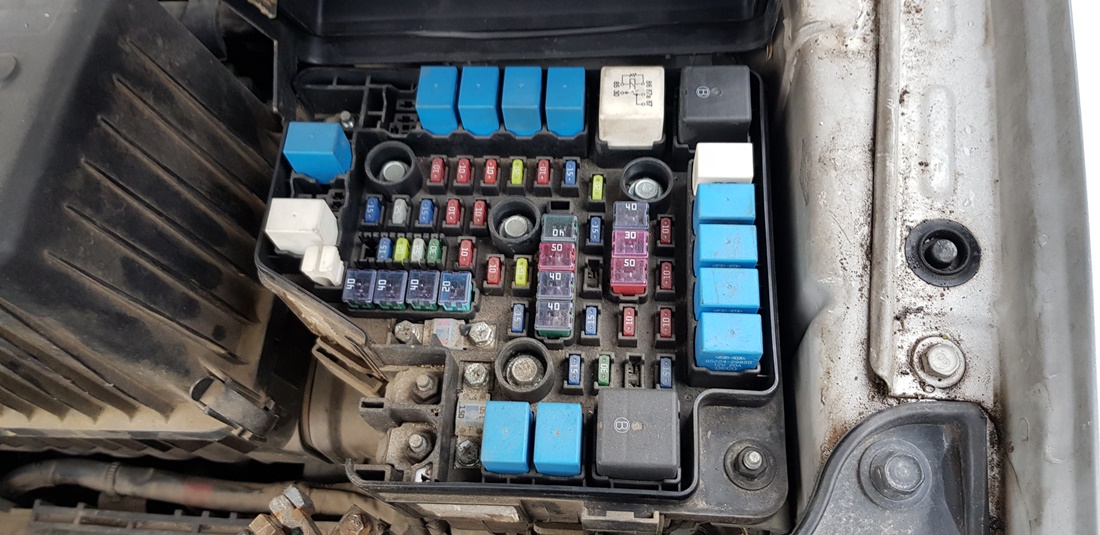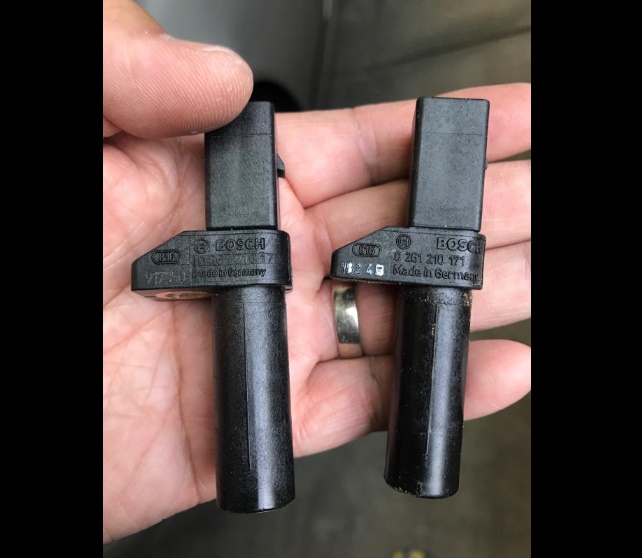Car batteries will last anywhere from three to five years, sometimes even longer. The lifespan of the battery depends on the use, climate, and quality of the battery itself.
Having a bad battery can cause a series of problems and to stay on top of that, I suggest checking your car battery once it reaches 3 years of age.
So, before you take your car to the mechanic shop and replace your battery, let me show you how to test your car battery. Let’s dive into the details and by the end of this article, you will know how to test a car battery.
- Key Takeaway
- How Many Volts Should a Car Battery Have?
- How To Test a Car Battery
- What Does a Car Battery Do?
- Signs Your Car Battery Is Bad
- What Causes a Car Battery to Drain?
- FAQs
- Q: What is the voltage of a healthy car battery?
- Q: How do I test the battery terminal?
- Q: Can I test a car battery with a multimeter?
- Q: How do I check if my car battery is dead?
- Q: What is a load test for a car battery?
- Q: How often should I test my car battery?
- Q: How do I test my car battery with a battery tester?
- Q: How do I test my car battery with a multimeter?
- Q: How can I tell if my car battery is bad?
- In Conclusion
Key Takeaway
- A fully charged car battery should have a voltage of approximately 12.6 volts, and when the vehicle is running, it should register between 13.7 and 14.7 volts.
- To test a car battery, you can use a multimeter, setting it to the DC voltage scale, connecting the red lead to the positive battery terminal and the black lead to the negative terminal, then checking if the reading is around 12.6 volts for a fully charged battery.
How Many Volts Should a Car Battery Have?
A car battery should typically have 12 volts of power to start the vehicle.
When the car is off, a good battery should read between 12.4-12.9 volts.
However, the ideal car battery voltage with the engine running is between 13.7 and 14.7 volts. If the battery voltage drops below 12 volts, it could indicate a problem.
How To Test a Car Battery
A worn or faulty battery will cause no starts, engine turning over, especially in the cooler weather, battery discharging quickly, electrical malfunctions in your vehicle, and possibly a warning light on your dashboard.
That’s why I have put up this easy guide on how to test a car battery using simple and affordable tools. By the end of this article, you will know how to test a car battery.
1. Required tools for testing a car battery

In order to test a car battery, you will need some equipment. Keep in mind that the battery testing equipment is affordable and can last you for a long time. You will need:
- Digital multimeter. The digital multimeter for car batteries that I got is less than $20 and you can order it on amazon.com.
- Digital battery analyzer. You will need a digital battery analyzer to test the CCA which stands for Cold Crank Performance(amps). I got my battery analyzer for around $30 on amazon.com.
2. Locate and remove the car battery

Once you have your battery testing equipment in order, the next is to locate the car battery. In most vehicles, the battery is located under the hood.
However, in some vehicles, the car battery can be located in the trunk or under the rear seat. I prefer removing the battery before testing it because it gives me more access and I don’t have to worry about the terminals touching.
Disconnect the battery terminals using the appropriate tools. Always start with the negative terminal first to reduce the chance of a short when using your tools.
Once the negative clamp has been removed, then move on to the positive. Then, remove the hold-down clamp. Take out the car battery while holding it leveled so you don’t spill out any acid from the vent holes.
IMPORTANT: When charging or testing your car battery, always do this in a well-ventilated area so there’s no risk of fumes building up which could risk an explosion.
3. Test the voltage using a multimeter

Before testing the battery, you will need to ensure that the terminals are clean. Set the multimeter to the two-digit DC voltage setting. Then, touch the appropriate probes on the negative and positive terminals. The black goes to the negative and the red to the positive terminal.
A properly working 12V car battery should have a reading between 12.7V and 11.9V. Anything below 11.7V to 11.58V is considered moderate, and under 11.31V is considered bad.
If you have a reading below 11.31V don’t even bother recharging it. Go ahead and replace it with a new battery. You can check out some car batteries on amazon.com
4. Test the cold-cranking performance

Testing the CCA or the cold-cranking amps can be done with a battery analyzer tool. The car battery and CCA will be different for vehicles because it depends on the engine size. Larger engines need more power, therefore, higher voltage batteries.
On this particular battery that I am performing a test, the CCA is 410 on a temperature of -18 degrees Celsius or 0 degrees Fahrenheit.
Connect the red positive clamp to the positive terminal of the battery and the black clamp to the negative terminal of the battery. Turn on the battery analyzer tool and select the type of battery and the CCA written on the battery.
If you get a reading lower than what is written on the CCA label, then you will need to replace your car battery. I’ve tried recharging my old battery but simply it was just a waste of time and energy. Once your car battery goes bad, it’s time for a new one.
5. Install a new battery or reinstall the old one
Once all the testing is done, you will know if your battery is up for a replacement or not. Like I said before, if you have a bad car battery, replace it. It is not worth the headache. It can leave you on the side of the road and towing costs much more than a new car battery.
Whatever you decide to do, place the battery in the same position as before and tighten the hold-down screw first. Be careful not to touch the clamps. Attach the positive terminal first and then the negative.
What Does a Car Battery Do?
A car battery serves multiple crucial functions in a vehicle. Its primary role is to provide the electrical power needed to start the engine.
When you turn the ignition key, the battery sends a burst of energy to the starter motor, which then cranks the engine.
Once the car is running, the battery supplies electricity to all other electrical components in the car, such as the lights, radio, air conditioning, and onboard computers.
Signs Your Car Battery Is Bad
- Difficulty Starting the Car: This is often the first symptom people notice. The car may take longer to start, or you might need to turn the key a few times before the engine catches.
- Warning Lights: Most cars have a dashboard light that illuminates when the battery is not recharging properly. It usually looks like a battery, but sometimes it can be labeled “ALT” or “GEN.”
- Swollen Battery Case: If the battery case appears swollen or bloated, this could indicate the battery went bad. This can happen due to excessive heat caused by overcharging.
- Corrosion on the Terminals: White, ashy deposits around the terminals can interrupt the connection between the battery and the cables, causing trouble when you try to start your car.
- Electrical Issues: Problems with electrical components in your car, such as the radio, air conditioning, windshield wipers, or lights, can be a sign of a dying battery.
- Old Age: If your battery is more than three years old and has problems, it might just be nearing the end of its lifespan.
- Frequent Jump Starts: If you’re constantly needing to jump-start your battery, it’s a clear sign that it’s time for a replacement.
- Slow Engine Crank: When you attempt to start the vehicle, the cranking of the engine is sluggish and takes longer than normal to start.
What Causes a Car Battery to Drain?
Several factors can cause a car battery to drain, including:
- Parasitic Drain: Some electronic devices (like car security systems, clocks, or even the memory functions of your radio) can continue to run after the vehicle is turned off, leading to a slow but steady battery drain.
- Faulty Charging System: If your car’s alternator isn’t working properly, it may not be charging your battery as your car runs, leading to a drained battery.
- Old Battery: Car batteries typically last about three to five years. An old or worn-out battery may not hold a charge as well as a newer one.
- Extreme Temperature: Both hot and cold weather can have a negative impact on your car battery. Extreme heat can cause battery fluid to evaporate, damaging the internal structure of the battery. Cold can slow the chemical reactions within the battery, making it harder for it to hold a charge.
- Frequent Short Trips: If you only use your car for short trips, the battery may not get enough time to fully recharge, leading to a lower battery life over time.
- Electrical Problems: Any electrical issues, such as faulty wiring or fuses, can cause the battery to drain quickly.
- Leaving Lights On: Leaving your headlights or interior lights on when the car is off can quickly drain a car battery.
FAQs
Q: What is the voltage of a healthy car battery?
A: A healthy car battery should have a voltage reading of around 12.6 volts.
Q: How do I test the battery terminal?
A: To test the battery terminal, you can use a multimeter. Set the multimeter to the DC voltage setting and touch the positive lead to the positive terminal of the battery and the negative lead to the negative terminal. The multimeter will display the voltage reading says AutoZone.
Q: Can I test a car battery with a multimeter?
A: Yes, you can test a car battery with a multimeter. Set the multimeter to the DC voltage setting and touch the positive lead to the positive terminal of the battery and the negative lead to the negative terminal. The multimeter will display the voltage reading.
Q: How do I check if my car battery is dead?
A: If your car battery is dead, your car will not start at all. You can use a multimeter or a battery tester to confirm if the battery is dead or not.
Q: What is a load test for a car battery?
A: A load test is a method of testing a car battery’s ability to deliver current. It is performed using a load tester that measures the battery’s voltage while a simulated load is applied.
Q: How often should I test my car battery?
A: It is recommended to test your car battery at least twice a year, especially before extreme weather conditions or long trips.
Q: How do I test my car battery with a battery tester?
A: To test your car battery with a battery tester, simply connect the tester’s positive and negative leads to the corresponding battery terminals. The tester will display the battery’s voltage and condition.
Q: How do I test my car battery with a multimeter?
A: To test your car battery with a multimeter, set the multimeter to the DC voltage setting and touch the positive lead to the positive terminal of the battery and the negative lead to the negative terminal. The multimeter will display the voltage reading.
Q: How can I tell if my car battery is bad?
A: If your car battery is bad, it may not hold a charge, or it may have a low voltage reading. You can test the battery with a multimeter or a battery tester to check its condition.
In Conclusion
In conclusion, testing a car battery is a crucial aspect of vehicle maintenance that helps ensure its optimal performance and longevity.
By understanding the signs of a bad battery and regularly checking its voltage, you can prevent unexpected breakdowns and costly repairs.




